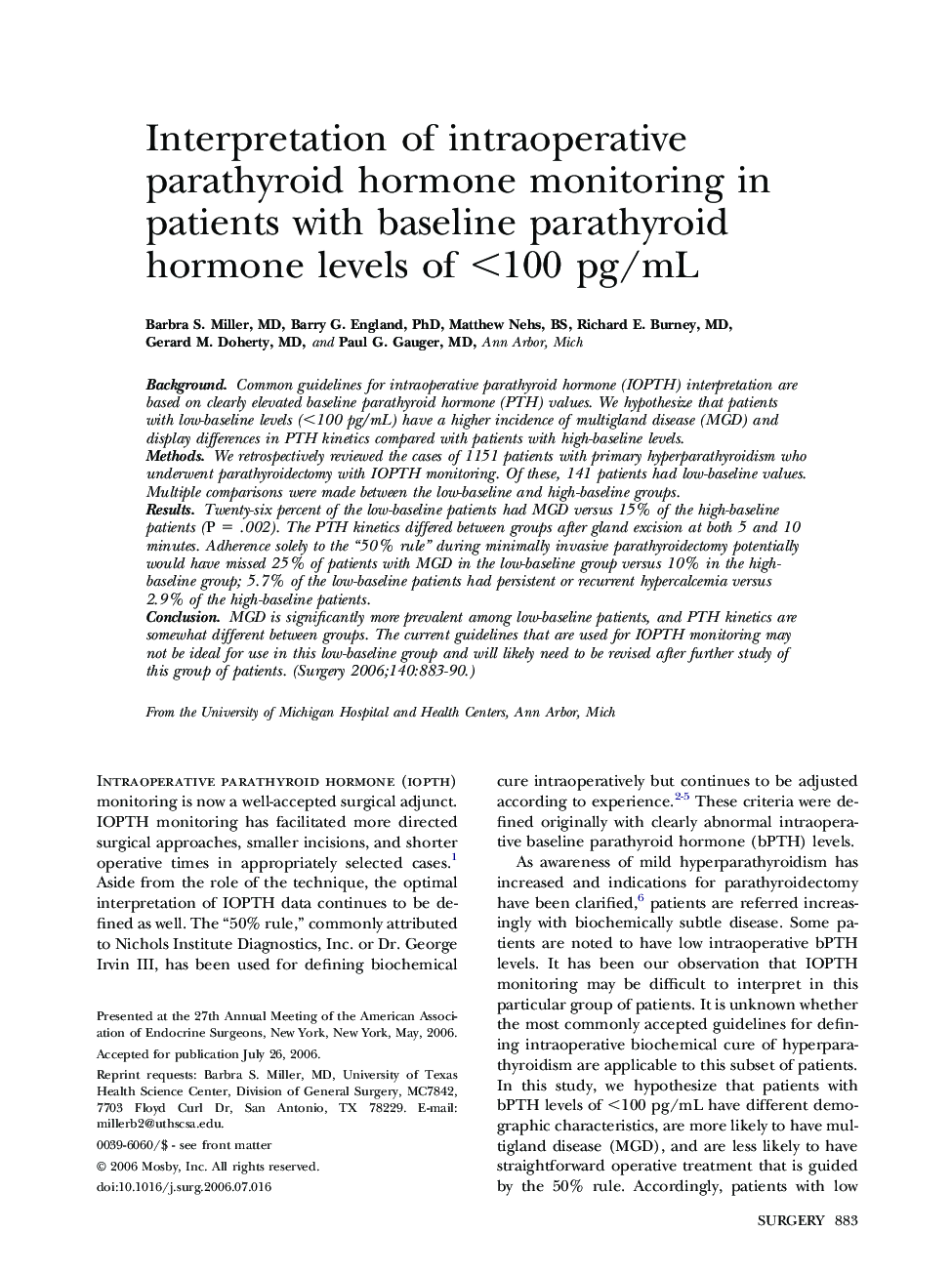| Article ID | Journal | Published Year | Pages | File Type |
|---|---|---|---|---|
| 4310451 | Surgery | 2006 | 8 Pages |
BackgroundCommon guidelines for intraoperative parathyroid hormone (IOPTH) interpretation are based on clearly elevated baseline parathyroid hormone (PTH) values. We hypothesize that patients with low-baseline levels (<100 pg/mL) have a higher incidence of multigland disease (MGD) and display differences in PTH kinetics compared with patients with high-baseline levels.MethodsWe retrospectively reviewed the cases of 1151 patients with primary hyperparathyroidism who underwent parathyroidectomy with IOPTH monitoring. Of these, 141 patients had low-baseline values. Multiple comparisons were made between the low-baseline and high-baseline groups.ResultsTwenty-six percent of the low-baseline patients had MGD versus 15% of the high-baseline patients (P = .002). The PTH kinetics differed between groups after gland excision at both 5 and 10 minutes. Adherence solely to the “50% rule” during minimally invasive parathyroidectomy potentially would have missed 25% of patients with MGD in the low-baseline group versus 10% in the high-baseline group; 5.7% of the low-baseline patients had persistent or recurrent hypercalcemia versus 2.9% of the high-baseline patients.ConclusionMGD is significantly more prevalent among low-baseline patients, and PTH kinetics are somewhat different between groups. The current guidelines that are used for IOPTH monitoring may not be ideal for use in this low-baseline group and will likely need to be revised after further study of this group of patients.
